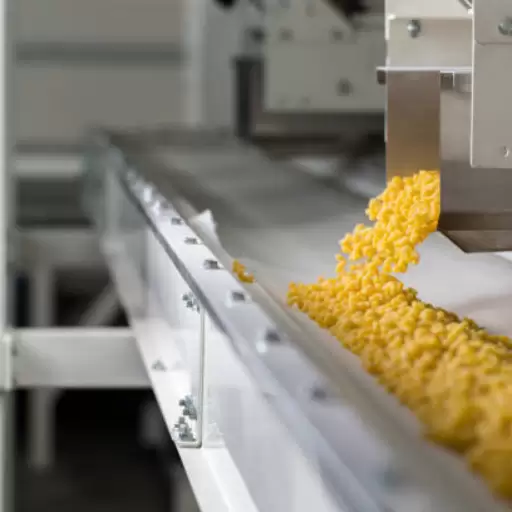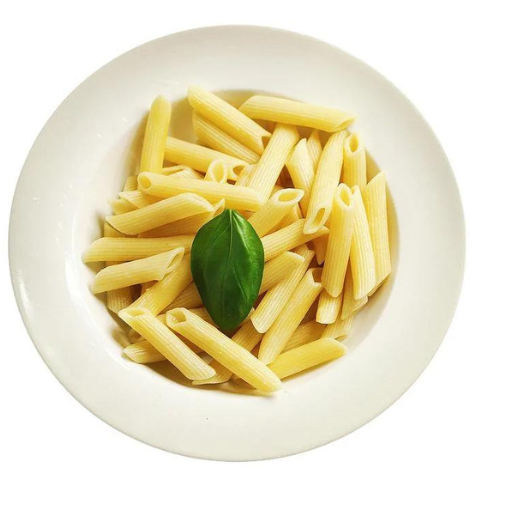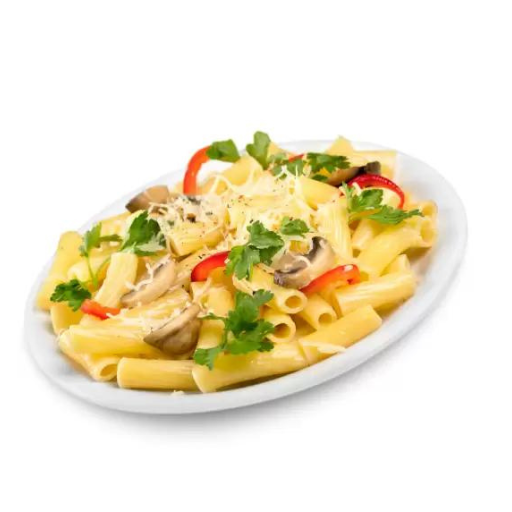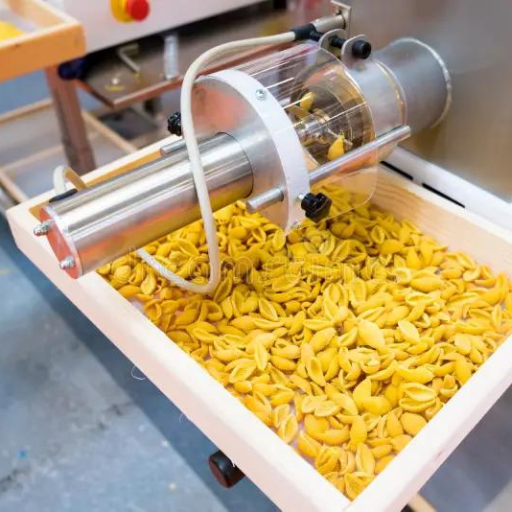Pasta, a staple in kitchens around the world, undergoes an intricate process before it reaches our plates. This blog delves into the various stages of pasta production, providing insights into how different types of pasta like macaroni are made, alongside the detailed operations of modern production lines. By exploring the step-by-step procedures, from the selection of high-quality ingredients to the precision of industrial machinery, we aim to give readers a comprehensive understanding of what it takes to produce this beloved food. Whether you’re a pasta enthusiast or simply curious about food manufacturing, this guide will offer you a glimpse behind the scenes of pasta production.
What is Macaroni Production and How Does it Work?
Understanding the Basics of Macaroni Production
To begin with, macaroni production is based on durum wheat semolina and water as core ingredients. The semolina which has high gluten content and gets firm after boiling is mixed with water to make a dough. Then, this dough is kneaded until it reaches the consistency you desire. It is followed by extruding it through a mould or die so that it takes shape of the well-known hollow tubes seen in macaroni. This extruded form of macaroni then cut into sizes and dried so as to remove excess moisture thus making them last longer on shelves. Finally, dry macaroni goes through cooling exercise before being packed ready for distribution. This simplified process helps maintain the quality, texture, and taste that make it a favorite food among many.
The Role of Extruders in Macaroni Production
Extruders play a vital role during macaroni production because they are machines used to shape dough into its familiar form. In this process, dough is pushed through an extruder fitted with specific pasta dies for macaroni. Size and shape of pasta are determined by these dies. Continuous pressure and movement inside an extruder helps maintain a consistent texture and thickness essential for even cooking throughout the entire piece(s) of dough or pasta laid in there Modern Extruders do not only give shape to the dough simplify mixing and kneading processes as well therefore making production easier by increasing efficiency.
Moreover, by controlling temperature and pressure precisely, they help meet the desired consistency needed in order to produce high quality macaroni as required by industry standards
The Evolution of Macaroni Pasta Production Techniques
Through years, different changes have been made in methods used in manufacturing macaronis due to advancement in technology as well as understanding about quality control. Initially, manually produced where durum wheat semolina mixed with water was hand-shaped or rolled out and cut. There were variations in shape and size of these shapes which resulted in irregularity during cooking.
Following technological advancements, the production process was transformed by the introduction of mechanical extruders. Kneading, mixing and dough shaping were automated by these machines guaranteeing that there would be a consistent texture and thickness. These parameters are important for modern extruder designs:
- Temperature Control: Maintaining correct temperature for dough (usually 30 to 50°C) as it is being extruded to ensure uniform texture or prevent premature drying.
- Pressure Control: The pressure inside an extruder must be kept at a constant level (typically between 50-200 bars) so that the dough evenly passes through it to form pasta of uniform shape.
Further improvements introduced advanced drying methods to enhance shelf life and pasta surface smoothness. Controlled drying environments manage humidity and temperature to gradually reduce moisture content without compromising the pasta’s structure. Parameters for drying include:
- Drying Temperature: It ranges from 38°C to 70°C with staged increments to prevent cracking.
- Drying Time: It varies between six hours and one day depending on initial moisture content and desired final product type.
Today, all these processes have been integrated into high speed macaroni manufacturing systems that meet international quality standards. In this context, a highly efficient and dependable production strategy exists that satisfies current market needs while adhering to strict quality control guidelines.
What Equipment is Needed for Macaroni Production?
Key Machines in Macaroni Pasta Production
To make macaroni efficiently and of high quality, there are several key machines that are required.
- Mixers: They generally mix semolina flour and water to form consistent dough. Industrial mixers ensure thorough mixing while kneaders develop gluten structure needed for the preferred pasta texture.
- Extruders: Extruders play a critical role in shaping macaroni from dough having an interchangeable die. Their design is such that they control temperature and pressure closely. They are often automated to enhance efficiency and uniformity.
- Drying Systems: These are used to reduce moisture content of the pasta after extrusion. Drying systems typically consist of multiple stages with controlled temperature and humidity levels to prevent cracking and ensure the final product is stable. Advanced drying techniques also help extend shelf life of macaroni.
These, when combined in a modern production line, facilitate fast paced, bulk quantity manufacture of macaroni meeting quality standards and consumer demand effectively.
Importance of Stainless Steel in Production Equipment
Stainless steel is crucial material in macaroni production equipment because it has many advantages. It does not easily corrode or rust which is essential for food processing environment hygiene as well as durability purposes. Moreover, stainless steel prevents contamination thus safeguarding the quality and safety of the pasta.
Stainless steel’s important technical parameters include at least 10.5% chromium content which makes it resistant to corrosion under humid conditions with high temperatures experienced during mixing, kneading as well as drying processes. The non-reactive nature ensures there is no interaction between it and any ingredients used for manufacturing pasta hence maintaining its structure.
Moreover, stainless steel is durable which means it can withstand mechanical stress by high-speed mixers, kneaders or extruders which are key for efficient production. It has a smooth surface which makes cleaning easy hence complying with strict hygiene standards set out by food processors across different jurisdictions worldwide.
To summarize, the use of stainless steel in macaroni production equipment ensures that they are long-lasting, hygienic and efficient thereby supporting the development of high-quality pasta which can cater to modern consumer needs.
Getting Reliable Industrial Macaroni Production Equipment
Reliable industrial macaroni production equipment can be sourced by considering characteristics such as durability, efficiency and conformity to industry specifications. Renowned manufacturers like Shandong Loyal Machinery Co., Ltd., Pavan and Fava have top quality machines that ensure consistent output with minimum downtime. These firms provide strong equipment made from stainless steel for durability and easy maintenance. Moreover, these companies have comprehensive support and maintenance services that help minimize disruptions in their operations. Considerations when selecting equipment should include its production capacity, ease of integration into existing systems and availability of service parts. In doing so your facility will operate at optimum efficiency while ensuring strict hygiene and quality standards by established providers.
How to Start a Macaroni Production Line?
Setting Up Your Macaroni Pasta Plant
When you want to set up your macaroni pasta plant, it requires careful planning and execution for the efficient production of quality pasta. Firstly, what is important is conducting a thorough market research which gives insights on demand, competitors and potential customer base. Secondly, get a good location with enough space for machinery, raw materials and finished product storage. The factory should be in compliance with local health and safety regulations including proper ventilation, sanitation and waste disposal systems.
Investment in reliable industrial-grade equipment is crucial. Choose machines that are durable, made of stainless steel for hygiene and capable of high-speed production. Key equipment includes mixers, extruders, dryers, packaging machines etc., go for such companies as Shandong Loyal Machinery Co., Ltd., Pavan or Fava whose products can be relied upon because they provide robust as well as automated machinery that ensures consistent output.
Moreover, establishing quality control system is very crucial. Regular testing of raw materials as well as finished products must be carried out to meet hygiene & quality standards. This means hiring competent staff who must have knowledge about pasta production as well as operating the machinery during the production stage.
Lastly establish relationships with suppliers that will provide you with raw materials & packaging supplies then also develop a distribution network to deliver your product efficiently into the market. In conclusion if your plant runs smoothly while adhering to industry norms makes your macaroni manufacturing line successful.
Essential Steps in Establishing a Production Line
- Conducting Market Research:Before setting up any production line it is vital to conduct an extensive market research so that one understands demand level and looks at prospects clients might come from; also competitors need to be identified too. Understanding the dynamics of the market helps when making decisions concerning things like what to produce or how best to enter different markets.
- Securing a Suitable Location:Choosing where exactly this facility will be situated is an important step as it should allow enough space for machinery, raw materials and finished product storage. Moreover, the facility must follow health and safety regulations put in place by local authorities like proper ventilation, sanitary conditions, and waste management to keep a safe working environment.
- Investing in Reliable Equipment:The acquisition of reliable, industrial-grade equipment is necessary for production to be efficient. Select machines that are long-lasting, made from stainless steel for hygiene purposes and capable of high-speed production. Key equipment includes mixers, extruders, dryers and packaging machines.
- Setting Up Quality Control Systems:It is imperative to set up quality control systems. It entails periodic examination of raw materials alongside finished products so as to meet hygiene as well as quality demands. Strict quality checks ensure that the final product is both safe and meets industry requirements.
- Hiring and Training Skilled Staff:This requires skilled personnel who will operate the machinery as well as supervise the process of production. It means hiring people who have knowledge on pasta making or how to handle machine used during manufacturing process. Staff training ensures that there are no hitches in the production line hence maximizing productivity.
Developing Supplier and Distribution Networks
Find reliable suppliers for your raw materials and packaging needs. In building such distribution networks, it also helps achieve efficient delivery of products to market. Strong partnerships guarantee a smooth supply chain hence this guarantees constant levels of manufacturing output.
Ensuring that your plant operates smoothly and complies with industry standards will position your macaroni production line for long-term success.
Legal Requirements and Business Considerations in 2024
Compliance with Health and Safety Standards
It is still essential to see that stringent health and safety requirements are met in the food production sector in 2024. There are regulations like Food Safety Modernization Act (FSMA) by FDA which make it compulsory for regular assessments and compliance with preventive controls so as to reduce cases associated with foodborne disease. Hazard Analysis and Critical Control Points (HACCP) protocols must be instituted to identify and monitor risks within your manufacturing processes.
Environmental Regulations
Sustainability is a buzzword businesses should be aware of today. For example, macaroni making facilities would have to comply with environmental regulations. These encompass effective waste management, decreased carbon emissions, and utilizing energy efficient machinery. Thus understanding local and global environmental laws will avoid penalties plus enhance corporate responsibility.
Labour Laws and Employee Welfare
Knowing what has been provided in labour laws is very important over here which suggests fair wages, safe working environment as well as not discriminating people on whatever basis. Continuing training programs also development opportunities for staff fulfill legal obligations but also improve productivity within their job force. Changes in employment law should be studied carefully by company owners.
Intellectual Property and Trademark Protection
This works best if you secure intellectual property rights of your products plus brand against any infringement this year. On the other hand, trademark registration covers your brand names; logo as well as unique features of any product produced thus promoting interests in business activities. It is advisable that you perform regular audits regarding IP as well as being vigilant towards monitoring the market for possible infringements.
Financial and Tax Considerations
Complying with tax rules to stay clear from legal implications or financial sanctions when moving through the maze of financial laws means avoiding breaking tax laws completely at least up until year 2024- that’s why companies may maintain detailed account books use tax incentives for sustainable practices consult experts in taxation about how taxes can be optimized.
Market Regulations and Consumer Rights
Your products must meet marketplace regulation meaning they meet the protection of consumer rights like consuming them within the accurate terms and conditions issued during labelling, advertising among other forms of promotion. It adds consumer confidence and ensures compliance with legislation on food labeling when one knows what ingredients are used in the products and what nutritional values they contain. On the same note, regulatory standards can be met through constantly checking customer feedback as well as effective complaint handling.
Therefore, understanding these legal aspects and business factors will help you run a successful but sustainable macaroni-making line in 2024.
How to Optimize Macaroni Production for Quality and Efficiency?
Optimizing Macaroni Production Line Efficiency
Key to maximizing quality and optimizing efficiency is making the extrusion process more efficient. This involves regular maintenance and calibration of your extrusion equipment, preventing downtimes and ensuring consistent output. Advanced control systems can also be used to automate the process thus reducing human error and increasing accuracy in temperature and pressure settings. Another important issue is the selection of raw materials that are high-quality as well as consistent thereby minimizing variability and waste. Upgrading to energy-efficient extruders will reduce operational costs and environmental impact too.It’s easy to increase productivity, improve product quality, which has a sustainable macaroni production strategy.
Maintaining Consistent Quality
There are many critical practices required to maintain consistent production quality in macaroni. Firstly, employ strict QC measures at all stages of production starting from sourcing ingredients till packaging. Standardized recipes as well as process parameters help bring uniformity across different batches.The texture taste and appearance of the product have to be checked routinely for quality assurance purposes.
Precision-controlled state-of-the-art equipment should be used in mixing, extruding, drying etc. Regularly maintain and calibrate this equipment so that it does not deviate affecting the quality of outputs.This also means training your workforce on quality assurance protocols.
Finally, ensure you have a strong traceability system from raw materials through finished goods. This assists in trouble shooting fast but more importantly keeps food safe compliance at bay.Thus, these best practices will help you keep up a constant high level of macaroni product quality.
Tips for Efficient Macaroni Production Lines
Several key strategies should be applied for efficient macaroni production lines optimization.Firstly, automate processes where possible because automation streamlines operations reducing labor costs while mitigating human errors.Use advanced extruders/cutters with high throughput rates which enhance macaroni consistency plus shape.
Secondly focus on preventative maintenance.Frequent checks/maintenance procedures by machine operators help to avoid sudden breakdowns and lengthen the useful life of these gadgets. Additionally, a predictive maintenance schedule using IoT sensors can prevent potential issues before they become critical.
Thirdly, ensure optimal drying cycles. For energy conservation purposes, proper drying is essential. Use energy saving dryers and closely monitor moisture levels for even drying with low power consumption.
Moreover, incorporate real-time monitoring and data analytics. By using software solutions that provide real-time insights into production metrics, one can quickly spot inefficiencies.Along with this are the just-in-time delivery inventory system to reduce storage costs.
Lastly, streamline supply chain processes.Therefore efficient procurement as well as inventory practices ensure that raw material shortages never cause production stoppages.Just in time (JIT) inventory systems will also minimize waste and decrease storage expenses.
These guidelines could make your macaroni line run more smoothly at lower cost without sacrificing quality.
Which Countries Lead in Macaroni Production?
Manufacturing of Macaroni Pasta and the Italian Influence on the same
The influence Italy has had on macaroni pasta is profound and can be traced back to ages-old culinary traditions. Being the birthplace of pasta, Italy has perfected macaroni making through an emphasis on high-quality durum wheat semolina, traditional techniques, and inventive processes. The law in Italy calls for strict conformation to definite rules that govern how macaroni should be made thus ensuring that only the best quality of them is produced. Additionally, there is a cultural dedication towards pasta-making which enables craftsmanship and innovation to co-exist hence Italian macaroni being highly ranked worldwide as texture-wise or taste-wise or even its good will of use in many different dishes.
Macaroni Production growth in India
India’s production of macaroni has increased remarkably in recent years due to changes in diet preferences as well as increased urbanization.I have recognized that this increase was triggered by its convenience and adaptability for Indian cuisine brought about by the demand of pastas including macaronis. Further advancement in technology has led to installation of modern manufacturing facilities where their productivity is enhanced while quality maintained. Additionally, Indian customers are now embracing the adaptation of this type of product to suit local flavors with spices which are leading it to becoming one major foodstuff among families within India. As a result, both local and international brands have expanded their presence in the Indian market leading to an overall surge in production volumes.
Global Trends and Opportunities 2024
In 2024 I predict various global trends will drive opportunities within the macronin industry. Wellness still occupy consumer minds leading them into looking for diet oriented foods such as gluten free macoris etc.. Furthermore sustainability matters more than ever before with consumers preferring sustainable ingredient sourcing or eco-friendly packaging among others things. At the same time, there will be an innovation in products including plant-based macaronis and fortified macaronis among others that will trigger market growth. These trends indicate avenues for both incumbents and new entrants to attract a broader audience through health-centric, sustainable and innovative pasta offers.
Reference sources
-
Loyal: Macaroni Production Process
- Loyal offers an in-depth exploration of the macaroni production process, detailing how various molds and extruders are used to produce popular macaroni shapes. This source covers key aspects of production line operations, providing valuable insights into modern pasta manufacturing techniques.
-
EPA: AP-42, CH 9.9.5: Pasta Manufacturing
- The Environmental Protection Agency (EPA) provides a thorough process description of pasta manufacturing, including dry macaroni production. This document details every stage of the production process from mixing ingredients to drying, offering a technical and comprehensive view of pasta production operations.
- Read More2
-
New Food Magazine: Pasta Processing and Final Product Characteristics
- New Food Magazine delves into the fundamentals of pasta processing, highlighting the characteristics of the final product. This article examines high-temperature production lines and their efficiency, providing essential insights into the operational aspects of producing high-quality pasta.
- Read More3
Frequently Asked Questions (FAQs)
Q: How does a pasta factory work?
In different shapes and sizes, the aforementioned factory employs diverse engineering strategies and machinery to produce pasta noodles. The production commences with blending of flour and water to create dough. This mixture is fed into a machine that kneads it and then molds it through numerous dies. Consequently, the pasta may be effectively dried, sealed upon rehydrated to consume as instructions or packeted for distribution to guarantee that the final product attains quality and consistency.
Q: What is the importance of having screws in the process of manufacturing macaroni?
The screw plays an important role in macaroni production because it presses and forms dough. The dough is fed into a machine where it’s blended up by screw passing through die having some holes hence forming various shapes pasta like macaroni. Screw ensures evenly pressed dough and maintaining the uniformity of final pasta quality.
Q: Can you discuss any various shapes of commercial pasta produced?
Commercially, there are many shapes of pasta noodles produced which can fit different cooking styles or preferences. Pasta varieties such as spaghetti, penne, fusilli, farfalle among others are common ones in most food shops today. Each variety has its specific purpose; tomatoes based sauces best suit spaghetti while penne fits baked dishes perfectly well. Therefore, producers have ability to make different shapes thereby helping them address wide range of market demands.
Q: How does Italy influence global pasta manufacturing business?
Italy has had a significant influence on global pasta manufacturing because they have rich heritage making pastas.The worldwide factories tend to adopt Italian techniques as well as recipes besides culinary guidelines.Traditional Italian designed pastas including Spaghetti,Fettuccine,Rigatoni amongst others have taken root in multiple countries thus authentic Italian pastas demand continue shaping the way they are being produced globally.
Q: What makes up materials for making macaroni paste?
Main ingredients used in making macaroni include durum wheat semolina, water and sometimes eggs. Moreover, other material such as spinach or tomato puree could be added depending on the recipe to give different colors and flavors of the pasta. Starch among other additives may also be included so as to enhance its texture and cooking properties.
Q: What is the importance of drying in pasta production?
Drying is a critical part of pasta production because it helps remove water from the pasta thereby making it shelf stable. The method used for drying involves passing warm air over the product gently until it becomes totally dry. This ensures that pasta preserves its shape, taste and consistency hence extending its shelf-life in addition to convenient storage and easy transportation.



















